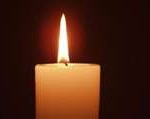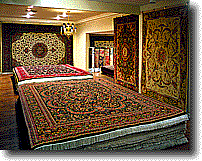
Does Burning Candles in Your Home Pollute the Air?
Candles are used (burned) in seven out of every ten homes in the U.S. according to the National Candle Association and 35% of all candle sales occur during the Holiday/Christmas Season. The association, an industry trade group goes on to say that when properly burned, a candle’s only byproducts are water vapor and Carbon Dioxide.
What Happens When Candles are Burned Improperly?
SOOT
Combustion can produce soot-minute particles that are oily in nature allowing penetration deep into porous materials (carpet, upholstery, draperies, wall board, etc.) making them difficult or even impossible to remove. Also, since most homes have either heating or cooling ventilation systems, the soot can readily be transported from room to room. Even more important than the harm which can be done to your home, candles can also have an adverse effect on the health of your family. With a particle size of less than 1 micron, it is very easy for soot to penetrate to the deepest areas of the lung-studies have shown they (soot particles) will remain for long periods of time. Those most affected by candle soot would be people with existing respiratory conditions such as asthma or emphysema.
Candles may release soot for a variety of reasons. Burning candles in a draft is one way. With container candles, the shape of the container itself can cause soot to be produced. If the container causes unsteady air flow, either too much or too little oxygen, the candle will not burn cleanly, producing soot. Often soot is the result of too much fuel (wax) being delivered to the flame, this can be caused by a wick which is too large. With scented candles soot may be produced by additives which are not specifically formulated for candles. Certain varieties of candles have been shown to produce indoor concentrations of soot that exceed levels allowed in outdoor air by the U.S. Environmental Protection Agency ( www.epa.gov ).
If you can’t live without the glow of a warm candle this Holiday Season take these steps:
- Ensure a steady tear drop flame-no flickering
- Don’t place candles near drafts-heating vents
- Cut the wick to 1/4 inch long maximum
- Purchase quality candles only
- Burn candles with no additives (coloring or fragrance)
- Occasionally air out your home to bring fresh air inside
- Never, ever leave a candle burning unattended
If suspect soot has accumulated on your furnishings have carpeting, upholstery, window treatments and Oriental rugs professionally cleaned-the sooner the better…Wishing You and Your Family a Clean, Healthy Holiday!




Comments on this entry are closed.